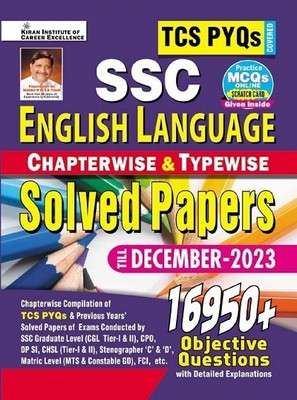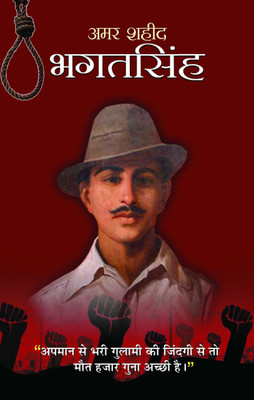
Warli Paintings: Traditional Folk Art From India (English, Paperback, K. Prakash)
Price: Not Available
Currently Unavailable
Highlights
- Language: English
- Binding: Paperback
- Publisher: English Edition Publishers & Dist. 5/10,11,105 Jogani Indu.complex,v N Purav Marg,mumbai
- ISBN: 9788187853244, 8187853247
- Edition: 1st, 2003
Description
Art represents an artist's Relationship with life and everything that is part of it-religion, rituals, livelihood, family, relationships, death... It is in this context alone that the true essence of Warli paintings can be appreciated.
Warli paintings take their name from the Warli Tribe of Maharashtra. Though spread out in Parts of Gujarat and Maharashtra, the Warlis are largely concentrated in the Dahanu and Talaseri talukas of Thane district of Maharashtra. The Region lies on the Sahyadri Hills North of the Western Ghats.
The Warlis have by Tradition been cultivators and gatherers growing a single crop, usually paddy, for subsistence or gathering Forest produce and domesticating livestock. Their Lives are thus inextricably dependent on the vagaries of nature.
The Warlis' relationship with Nature is of respectful exchange. The Forces of nature active in the various seasons are deified in their pantheon, the central place being accorded to the Mother Goddess. This relationship is the pivotal point of the Warli's Cultural life. And Painting is a Symbolic consecration of these forces.
The paintings are executed inside the hut. Walls are first smeared with cowdung. Red mud is then applied to provide the base texture. Pointed Bamboo twigs and thin Rice paste are used to draw patterns.
Traditionally the paintings have always been done by suvasinis (married Women who are not widows). Dhanaleris (married priestesses) sing alongside Creating a festive atmosphere.
The theme and content of the Drawings varies with the occasion and the Deity being worshipped. The designs are intricate, decorative Patterns depicting rituals, Folk tales, Traditions and the main preoccupations of the people : hunting, sowing and harvesting, birth, Marriage and death.
Trees which Play a crucial part in the Warli's livelihood are given careful attention in the paintings. Different varieties of Trees are drawn in detail forming intricate decorative patterns. Birds, squirrels, monkeys, Snakes and other Animals are also depicted in action giving the painting vibrancy and movement. Other elements in nature like streams and rocks are also featured. Human forms are often used to render Abstract patterns and geometrical shapes.
Stylistically, the paintings suggest a relationship with the Neolithic Phase of Rock painting in Central India. Yashodhara Dalmia, in "The Painted World of the Warlis" noted that this period was characterized by paintings drawn in white outline, triangular human and Animal forms with geometric designs on the Cave walls. Besides these similarities there are the sudden emergence of the deer, its body covered with diagonals which, according to her, bears a striking resemblance to the deer of the rock paintings.
There is also the possibility that the Warlis have practiced and preserved traditions of the early Agriculturists for whom nature was an in exhaustive source of bounty. Thus nature was seen as the all encompassing mother who sustained life and Death within her womb. This consciousness of Mother Nature has had an unmistakable influence on every phase of the cultural life of India.
Philosophically, the process of painting for the Warlis appears to be more crucial than the final picture. For the painting is erased or allowed to fade after worship, probably hinting at the transience of all facets of life. The activity of painting has thus a functional role in the social and Spiritual life of the people.
Symbols in the paintings represent the Morphology of the Warlis' universe. Most of them emphasize fertility and Productivity in nature. The centrality of the Mother Goddess, Palaghata, in these drawings have prompted suggestions of the symbolic womb, its protective, nurturing qualities finding parallels within the walls of the house.
The repeated act of painting on every occasion of Worship emphasizes the repeated refuge in the inner 'womb space' enriched with vibrant and frisky life and equated with procreation. Parallels between symbols and Cosmology are carried further. The earthen pot is a repeatedly used motif symbolizing abundance.
Of all the paintings it is those rendered on the occasion of weddings which encapsulate the entire existence of the Warlis. The paintings play a critical role and a marriage cannot take place in their absence. These drawings, called chowks, are designed around Large ornate squares with elaborate concentric patterns. Besides flora and fauna, the groom's procession is often depicted in a corner. The chowk is executed in the homes of both the bride as well as the groom.
All the elements in a chowk are replete with symbolism. The most significant of these is the Goddess of Fertility painted prominently in the centre of the chowk. The other important symbol is the Horse considered to embody Sex and vitality. It is usually shown carrying the newly weds. Expressions of fertility and vigour are believed to protect one from Disease and evil spirits.
Another important occasion for the Warlis in the nava kaniya, the Festival of corn. Inner walls of the hut, Instruments of Cultivation such as the plough and sickle and Domestic tools like the pounder and Flour grinder are imprinted with auspicious motifs and symbols.
Besides marriage and harvest festivals, the Warli women decorate their huts on important occasions like Birth and death.
About The Author
K Prakash is one of the foremost Textile designers of today's time and his Style one of the most quoted in textile Designing and Art circles in India and abroad.
K. Prakash's forte lies in Creating unique designs from the myriad of textile art forms that exist in India. Not only does he create an interesting fusion of these but also succeeds in giving many individual art forms a totally new dimension. It is no wonder that K. Prakash's Creations are so popular even in UK, Japan and the Arabian countries.
Not surprisingly, K. Prakash is also an artist par excellence and today several high league Exhibitions do him Credit while many of his paintings are prized possessions of the rich and famous around the world.
Warli paintings take their name from the Warli Tribe of Maharashtra. Though spread out in Parts of Gujarat and Maharashtra, the Warlis are largely concentrated in the Dahanu and Talaseri talukas of Thane district of Maharashtra. The Region lies on the Sahyadri Hills North of the Western Ghats.
The Warlis have by Tradition been cultivators and gatherers growing a single crop, usually paddy, for subsistence or gathering Forest produce and domesticating livestock. Their Lives are thus inextricably dependent on the vagaries of nature.
The Warlis' relationship with Nature is of respectful exchange. The Forces of nature active in the various seasons are deified in their pantheon, the central place being accorded to the Mother Goddess. This relationship is the pivotal point of the Warli's Cultural life. And Painting is a Symbolic consecration of these forces.
The paintings are executed inside the hut. Walls are first smeared with cowdung. Red mud is then applied to provide the base texture. Pointed Bamboo twigs and thin Rice paste are used to draw patterns.
Traditionally the paintings have always been done by suvasinis (married Women who are not widows). Dhanaleris (married priestesses) sing alongside Creating a festive atmosphere.
The theme and content of the Drawings varies with the occasion and the Deity being worshipped. The designs are intricate, decorative Patterns depicting rituals, Folk tales, Traditions and the main preoccupations of the people : hunting, sowing and harvesting, birth, Marriage and death.
Trees which Play a crucial part in the Warli's livelihood are given careful attention in the paintings. Different varieties of Trees are drawn in detail forming intricate decorative patterns. Birds, squirrels, monkeys, Snakes and other Animals are also depicted in action giving the painting vibrancy and movement. Other elements in nature like streams and rocks are also featured. Human forms are often used to render Abstract patterns and geometrical shapes.
Stylistically, the paintings suggest a relationship with the Neolithic Phase of Rock painting in Central India. Yashodhara Dalmia, in "The Painted World of the Warlis" noted that this period was characterized by paintings drawn in white outline, triangular human and Animal forms with geometric designs on the Cave walls. Besides these similarities there are the sudden emergence of the deer, its body covered with diagonals which, according to her, bears a striking resemblance to the deer of the rock paintings.
There is also the possibility that the Warlis have practiced and preserved traditions of the early Agriculturists for whom nature was an in exhaustive source of bounty. Thus nature was seen as the all encompassing mother who sustained life and Death within her womb. This consciousness of Mother Nature has had an unmistakable influence on every phase of the cultural life of India.
Philosophically, the process of painting for the Warlis appears to be more crucial than the final picture. For the painting is erased or allowed to fade after worship, probably hinting at the transience of all facets of life. The activity of painting has thus a functional role in the social and Spiritual life of the people.
Symbols in the paintings represent the Morphology of the Warlis' universe. Most of them emphasize fertility and Productivity in nature. The centrality of the Mother Goddess, Palaghata, in these drawings have prompted suggestions of the symbolic womb, its protective, nurturing qualities finding parallels within the walls of the house.
The repeated act of painting on every occasion of Worship emphasizes the repeated refuge in the inner 'womb space' enriched with vibrant and frisky life and equated with procreation. Parallels between symbols and Cosmology are carried further. The earthen pot is a repeatedly used motif symbolizing abundance.
Of all the paintings it is those rendered on the occasion of weddings which encapsulate the entire existence of the Warlis. The paintings play a critical role and a marriage cannot take place in their absence. These drawings, called chowks, are designed around Large ornate squares with elaborate concentric patterns. Besides flora and fauna, the groom's procession is often depicted in a corner. The chowk is executed in the homes of both the bride as well as the groom.
All the elements in a chowk are replete with symbolism. The most significant of these is the Goddess of Fertility painted prominently in the centre of the chowk. The other important symbol is the Horse considered to embody Sex and vitality. It is usually shown carrying the newly weds. Expressions of fertility and vigour are believed to protect one from Disease and evil spirits.
Another important occasion for the Warlis in the nava kaniya, the Festival of corn. Inner walls of the hut, Instruments of Cultivation such as the plough and sickle and Domestic tools like the pounder and Flour grinder are imprinted with auspicious motifs and symbols.
Besides marriage and harvest festivals, the Warli women decorate their huts on important occasions like Birth and death.
About The Author
K Prakash is one of the foremost Textile designers of today's time and his Style one of the most quoted in textile Designing and Art circles in India and abroad.
K. Prakash's forte lies in Creating unique designs from the myriad of textile art forms that exist in India. Not only does he create an interesting fusion of these but also succeeds in giving many individual art forms a totally new dimension. It is no wonder that K. Prakash's Creations are so popular even in UK, Japan and the Arabian countries.
Not surprisingly, K. Prakash is also an artist par excellence and today several high league Exhibitions do him Credit while many of his paintings are prized possessions of the rich and famous around the world.
Read More
Specifications
Book Details
| Publication Year |
|
Contributors
| Author |
|
Ratings & Reviews
3.8
★
4 Ratings &
1 Reviews
- 5★
- 4★
- 3★
- 2★
- 1★
- 2
- 0
- 1
- 1
- 0
2
Dont buy
The book is full of warli paintings pics thats it...no detalis abt the pics.if u want to learn warli painting than this book is no use.
READ MOREFlipkart Customer
Jan, 2014
0
0
Report Abuse
Be the first to ask about this product
Safe and Secure Payments.Easy returns.100% Authentic products.
Back to top








